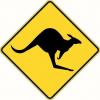I'm currently agonizing over which of these potentially magnificent planes to purchase. I do a fair amount of larger-scale joinery, and I was sorely lacking a good bench rabbet plane on the last breadboard tenon I made. I'm not opposed to buying vintage, but I definitely want cross-grain nickers, so I'm limited to a Stanley 10 1/4, and they are tough to find & super expensive in decent shape.
So aside from the blatantly obvious (standard pitch with the LN and low angle bevel up with the LV), can anyone out there recommend one of these over the other? And why?
I really like the traditional style of LN's planes, and the no 4 1/2 smoother that I caved in for recently is a work of art. I'm not a big fan of Veritas's aesthetics, but I like the features on their jack rabbet. And either one is north of 300 bucks, so I'll probably analyze this to death.
Any votes?





 Reply With Quote
Reply With Quote


